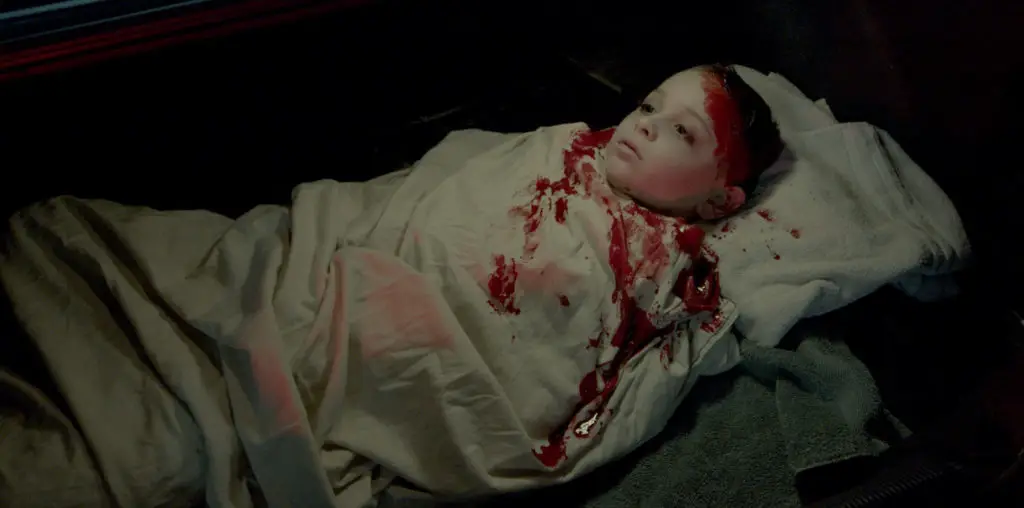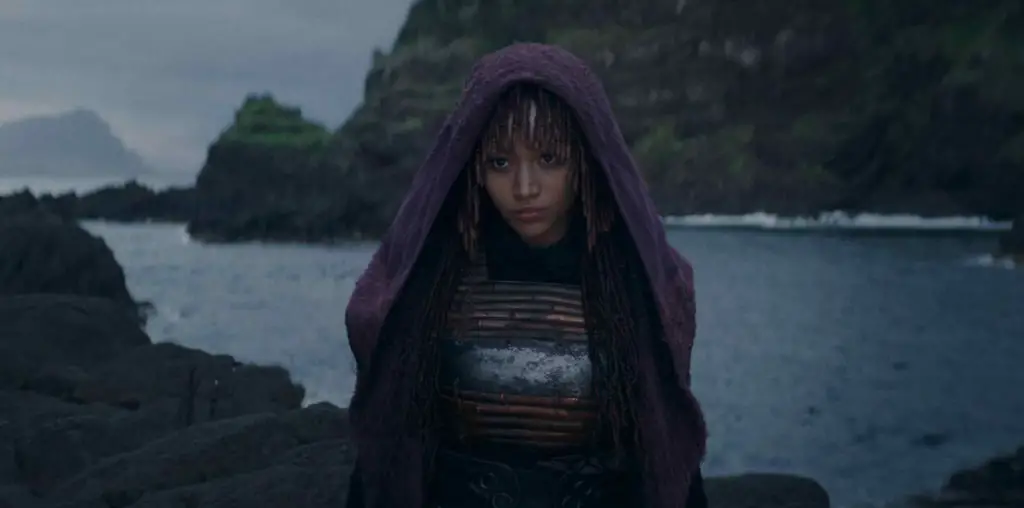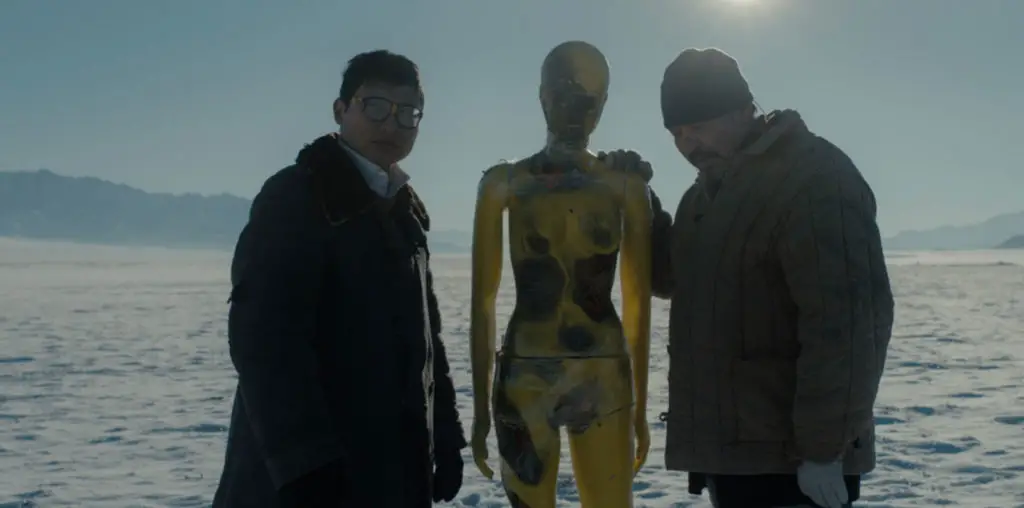
If you’re looking for Victor Mature and Hedy Lamarr, you’re in the wrong “Samson and Delilah.” This film takes place in the Australian Outback, where Aboriginal teenagers Samson and Delilah live in a crummy shantytown. Samson does not appear to have a family or any means of support, while Delilah lives with an elderly grandmother who creates Aboriginal folk art that is sold for great sums in metropolitan galleries – but the nasty ol’ white guys that run the art racket only give granny a teeny percent of the sales.
Through circumstances that are best not explained in detail, the teens leave their isolated poverty and move into the fringes of mainstream Australian society. They shoplift food from convenience stores and seek shelter under a bridge, where a verbose alcoholic nutcase becomes their new neighbor.
Director/writer Warwick Thornton graduated from short films to make “Samson and Delilah” his first feature. Sadly, he makes the mistake that hobbles too many new filmmakers: an overindulgence on arresting visuals (the cinematography, handled by Thornton, is unusually accomplished) but a deficit of compelling storytelling (the film moves so damn slow that maintaining patience becomes a struggle). It also doesn’t help that neither of the young leads – nonprofessionals Rowan McNamara and Marissa Gibson – seem to have any idea how to act.
Does the Australian Aboriginal population have it rough? You bet! But a dull film like “Samson and Delilah” doesn’t make their situation any better.



This film isn’t a great film because it exposes the broad experiences of a particular culture. It’s great film because it uses a particular cultural context to shyly expose an idiosyncratic experience of love. The boredom associated with rural Aboriginal existence isn’t the point of the film. It’s merely the background to and echo of the emotional drain associated with a commitment to somebody who’s engagement with the world is fundamentally crippled. The seamlessness with which the director was able to blend social commentary with an intensely personal revelation lead to comments like:
“perhaps real indigenous people living in extreme poverty still actually speak to each other once in a while.”
The two protagonists don’t talk because one of them can’t. It’s not a film about Aboriginal Australia. It’s a love story set in Aboriginal Australia. And a f*****g good one.
to clarify – the first half of the “review” is an appalling description of the film – i agree the point was missed.
I am sorry, but I and 6 of the other random people who were in the cinema and happened to be at the same restaurant afterwards all actually kind of agree. – This film has its place, its important…. but quote “an overindulgence on arresting visuals” is exactly the problem. and to quote another comment – “its so raw” – being raw doesn’t make it good, it makes it raw.
At what point in the editing process did the filmmaker not stop and say – ok perhaps ive gone too far trying to portray the feelings of extreme boredom aboriginal communities suffer, for example perhaps real indigenous people living in extreme poverty still actually speak to each other once in a while. Im not saying the point was missed but then when its driven home with a sledge hammer again and again it gets boring – or as this reviewer pointed out – dull. I do not agree that the film doesnt help – any effective media that can raise awareness of poverty and drug problems of this scale in our own country helps.
Excellent display of cinematography, important film but surely not worthy of the acclaim it gets and I personally find it refreshing someone has the gall to say so knowing full well the art community will hammer them as uneducated and shallow because its simply an unfashionable thing to do to dislike a raw australian film with an important message. Enough rambling – obviously i didn’t like it much either.
First I have to say that I’m totally biased. I first saw this film in 2009 on a plane back from Australia, and their journey has taken up residence in my head ever since. People are more than welcome to disagree (though I have to admit there’s been very few bad reviews of S&D — check out Rotten Tomatoes!), but it’s a clear tribute to this film that people felt the need to respond to this review.
That being said, I also agree with Mark — hate on the review all you want, but there’s no need to disparage the reviewer. Everyone’s welcome to their opinion. That’s how movies get made — be they good, bad or ugly.
I must respectfully disagree with all of the previous comments – since they make the mistake of assuming that the above piece of writing is actually a ‘review’, which it is not. An ill-informed and colloquial plot synopsis does not constitute film criticism. It is merely ‘opinion’ and as such requires no pause for thought, consideration, or empathy. Unlike ‘Samson & Delilah’ which demonstrates a cinematic intelligence of the highest order.
This review is ignorant, and completely missed the point. SAMSON & DELILAH is thought provoking, truthful and visually spectacular. What kind of story line were you after? If you’re looking for a generic experience then this film is not for you— but if you’re looking to open your eyes and heart to another culture- then it is not to be missed!
This review could not be more inaccurate. The film is beautiful and truthful.
I often find it interesting that people can not just disagree with a review without getting personal about it. Greg, your assessment of Phil Hall, and his taste, shows that you know nothing about him other than your knee-jerk reaction to this review.
What an inane review of Sampson and Delilah. Are American movie audiences composed entirely of meth freaks, dozing off between car wrecks and exploding torsos? Sampson and Delilah’s slow pace was the only way to allow an audience understand what life is like in an outback ghetto – and every Aussie I spoke to about this film appreciated this fact.
This site’s reviewer should stick to the kind of cinema experiences he or she understands – namely those that are hollywood’s answer to video games. This site’s review of S&D has ‘pearls before swine’ written all over it – in exploding 3-D neon.